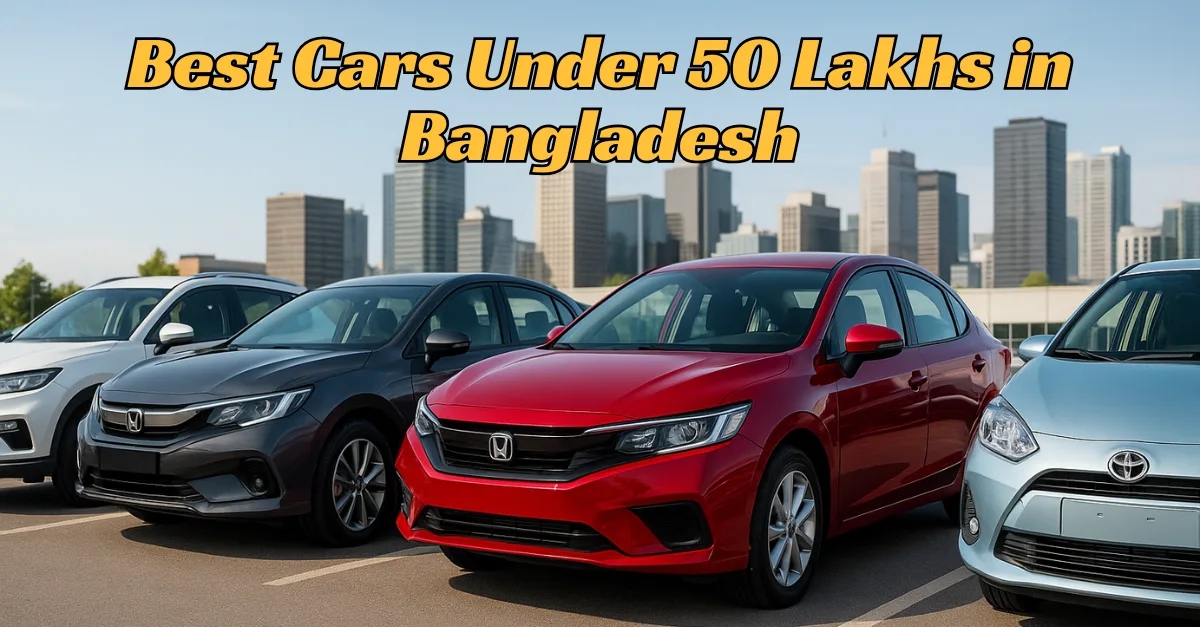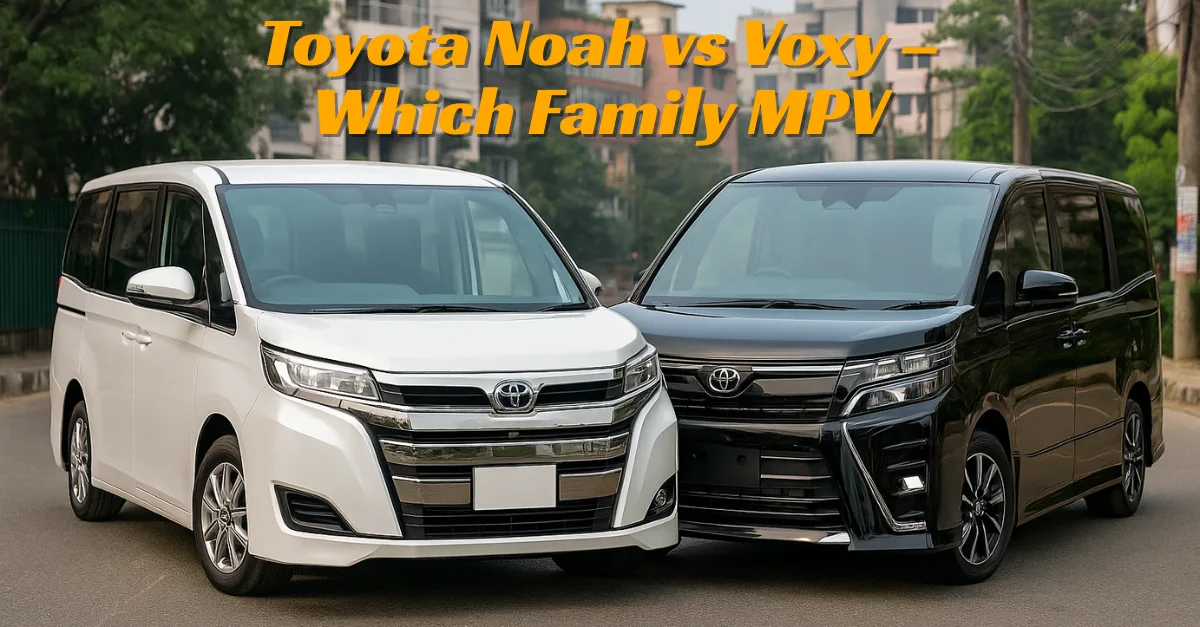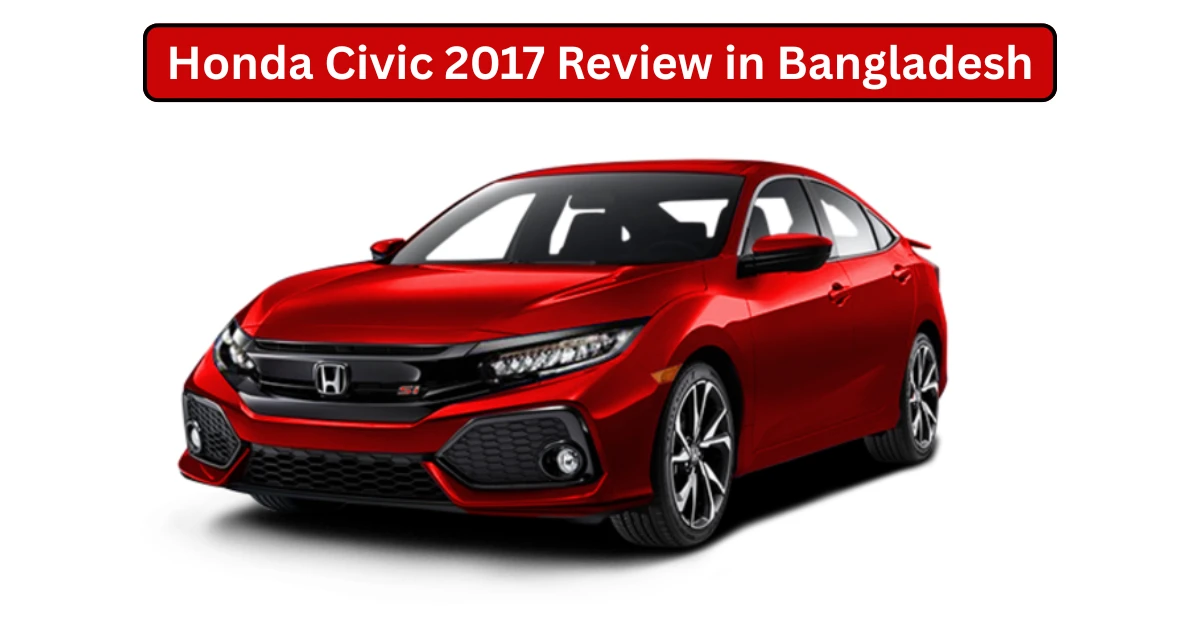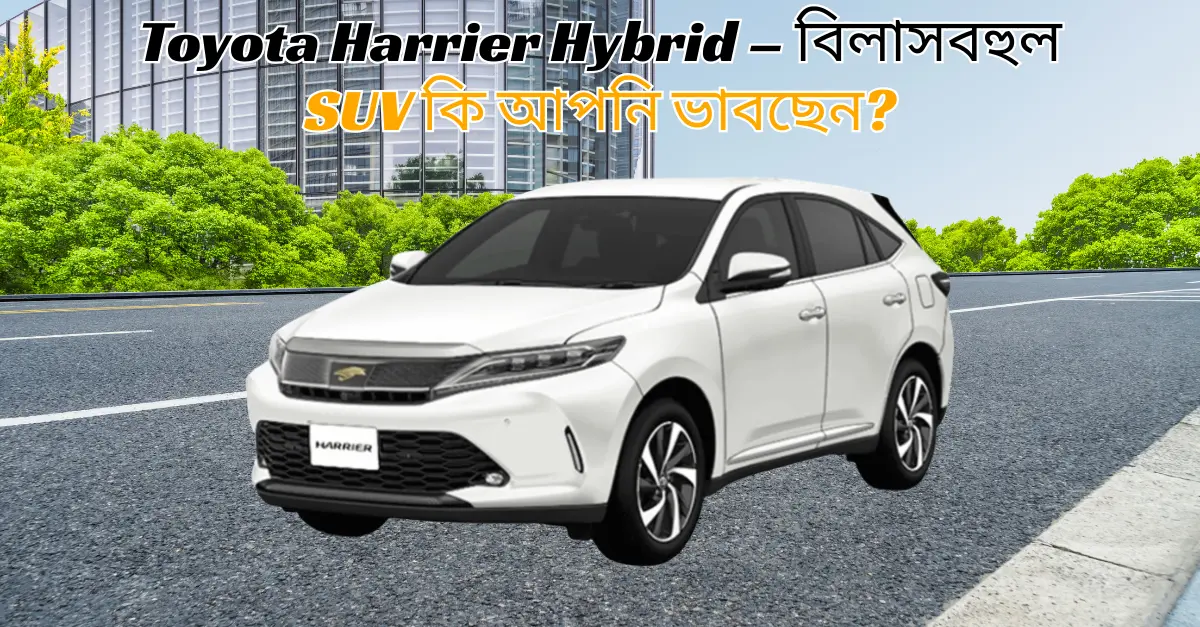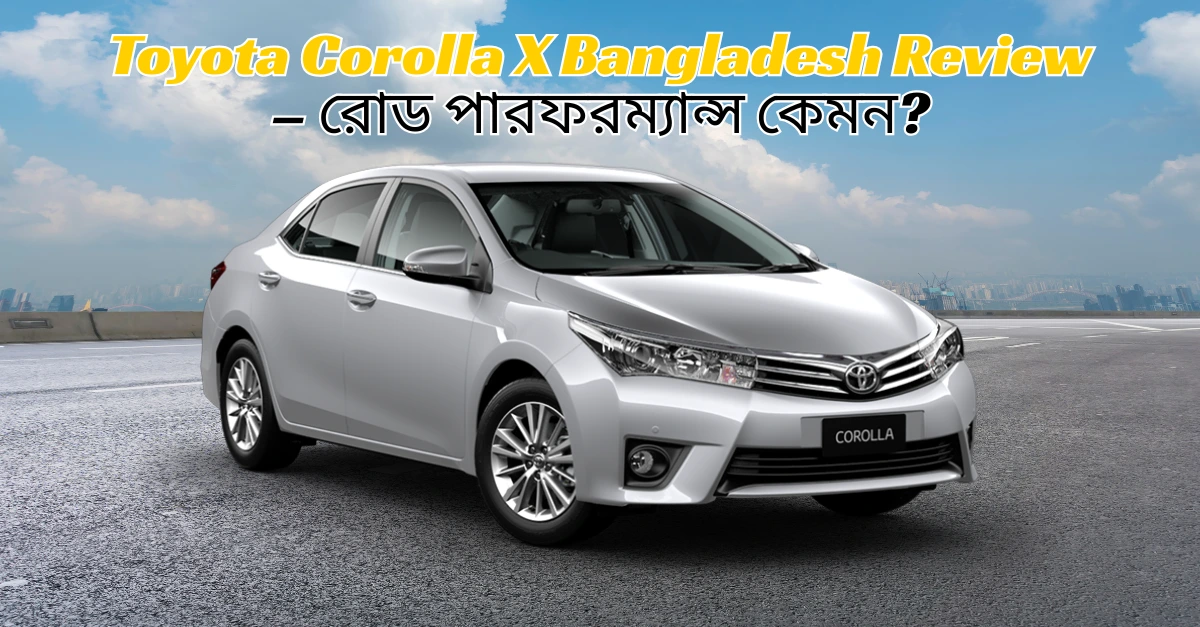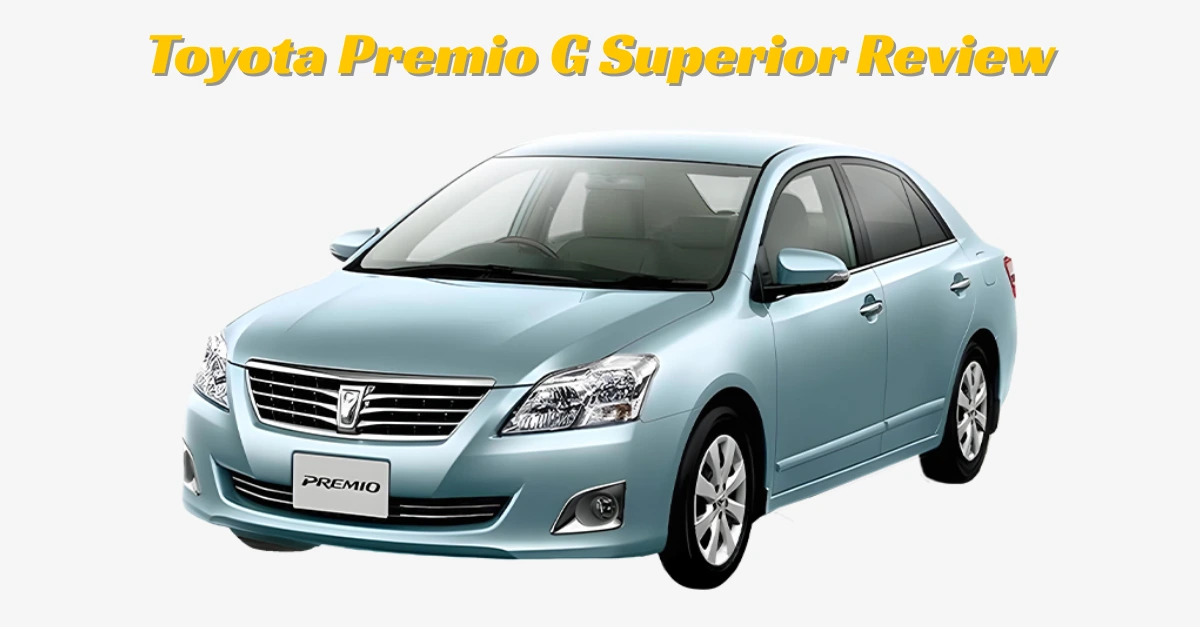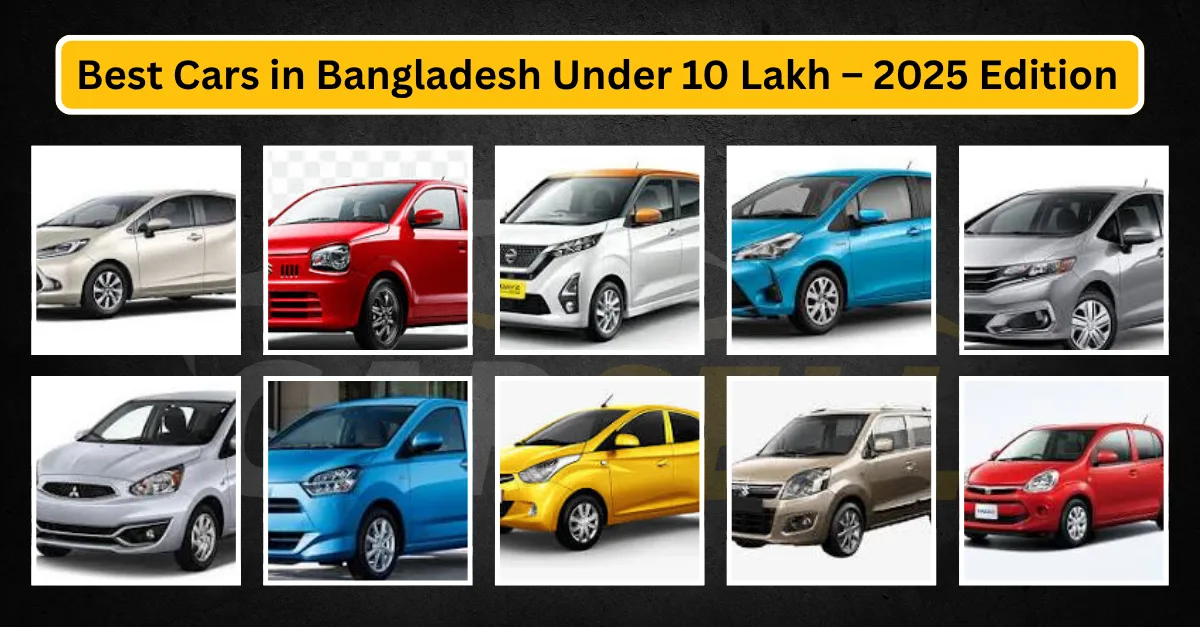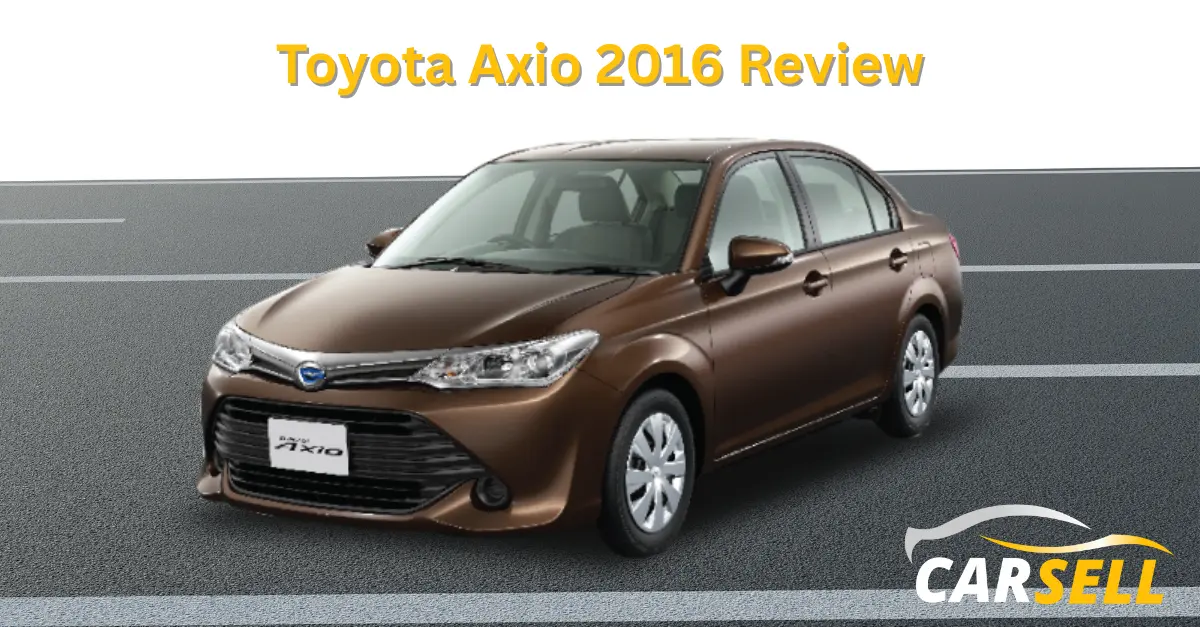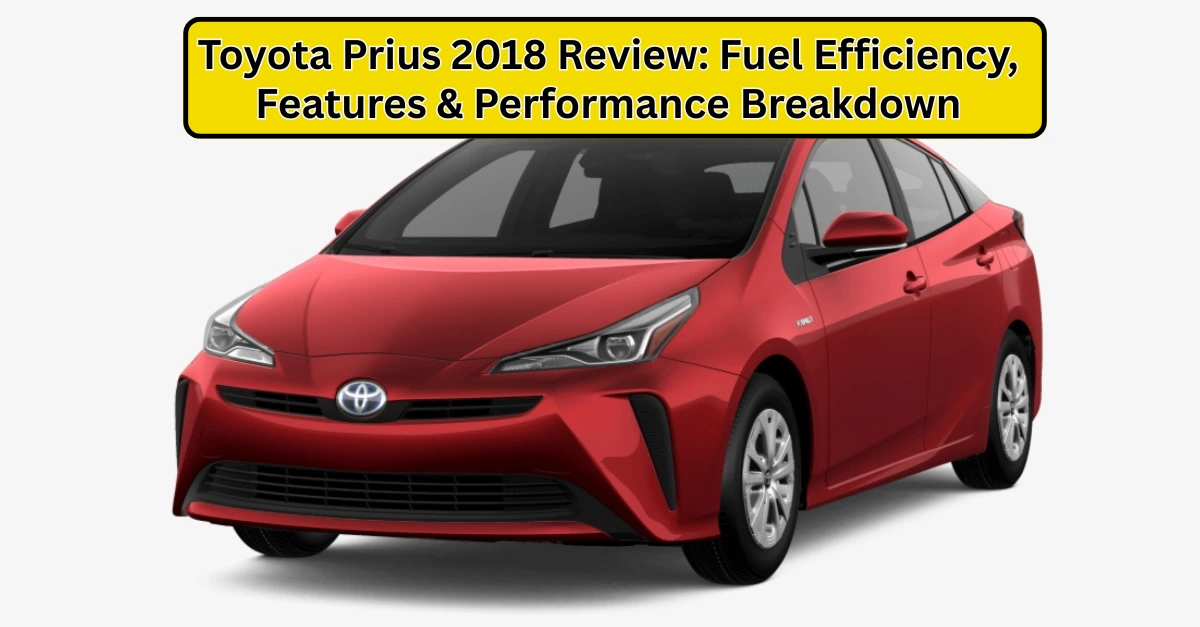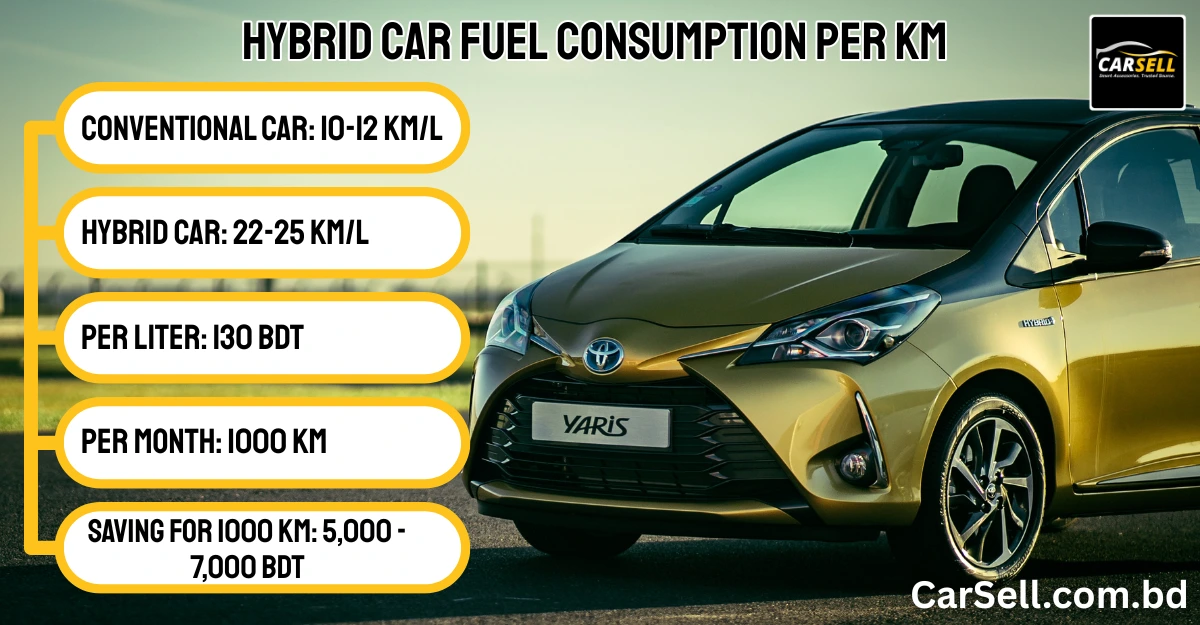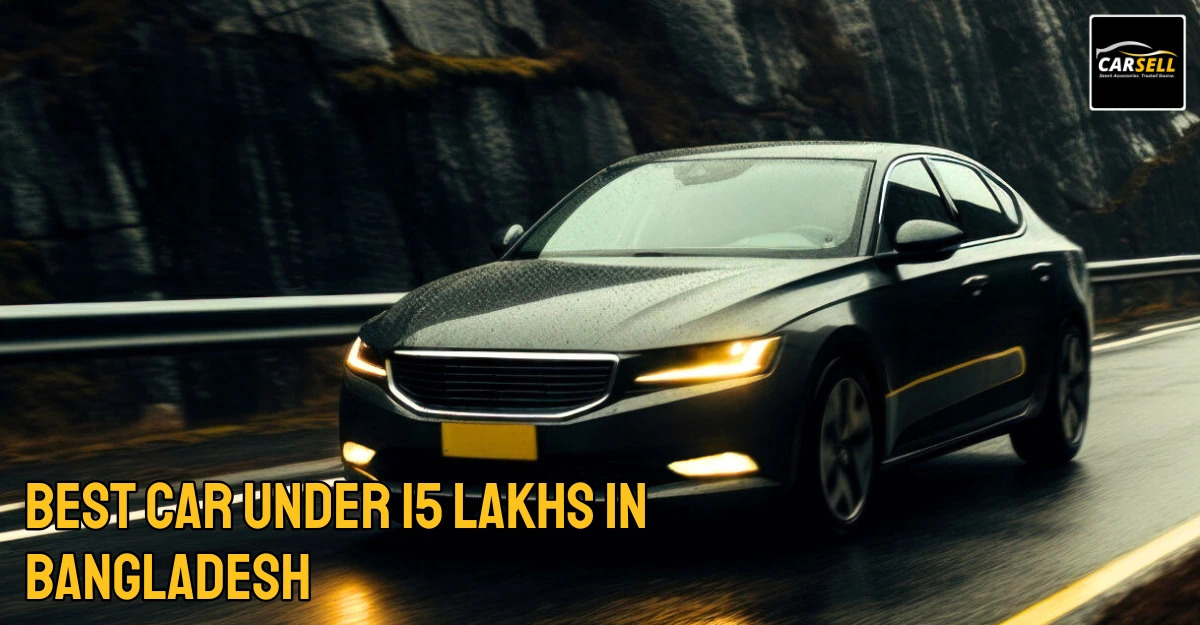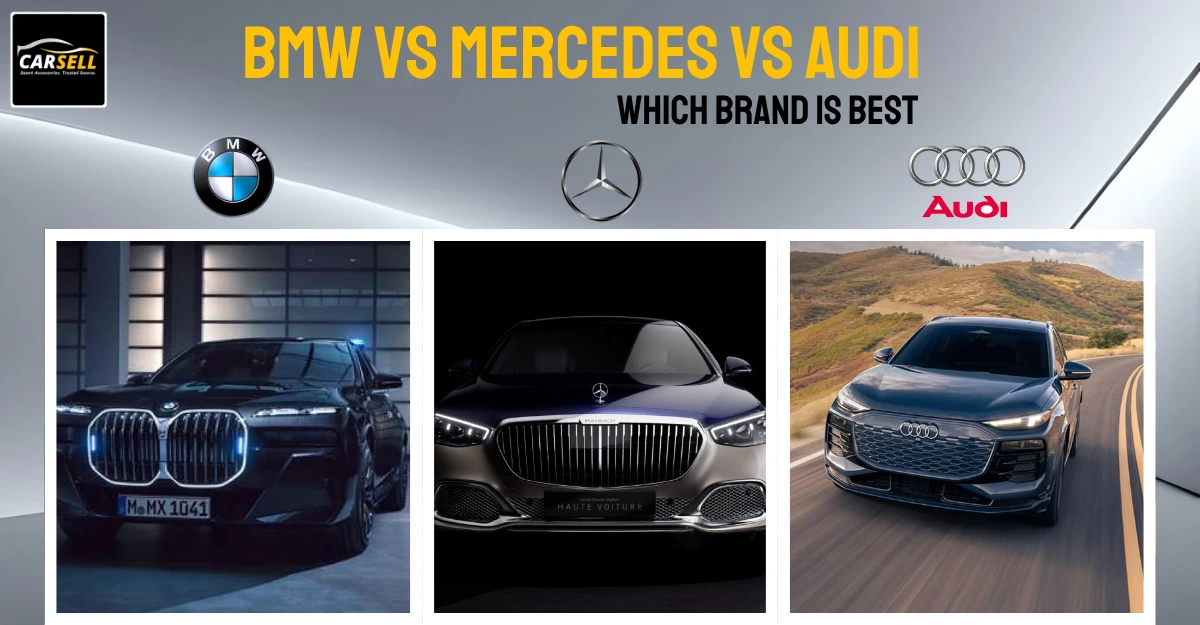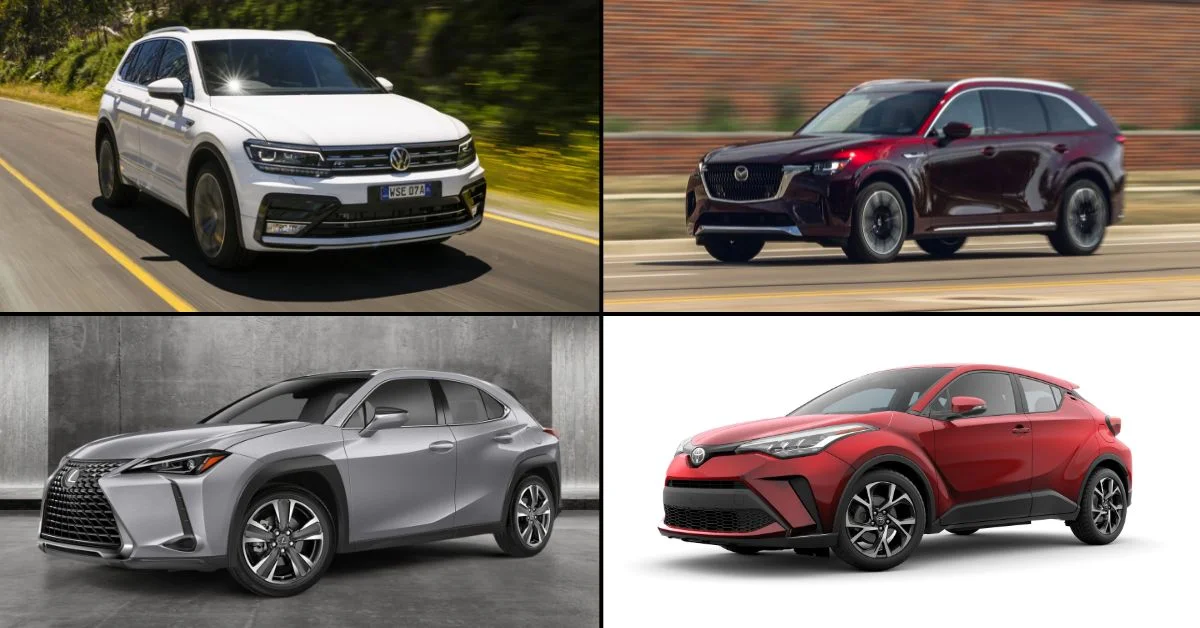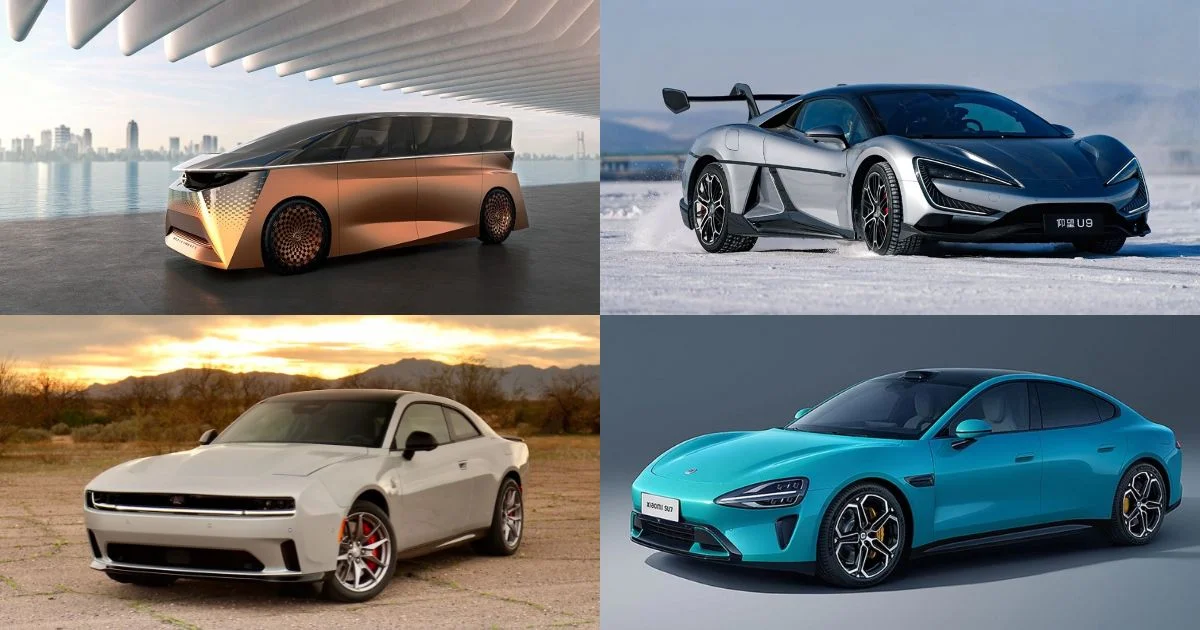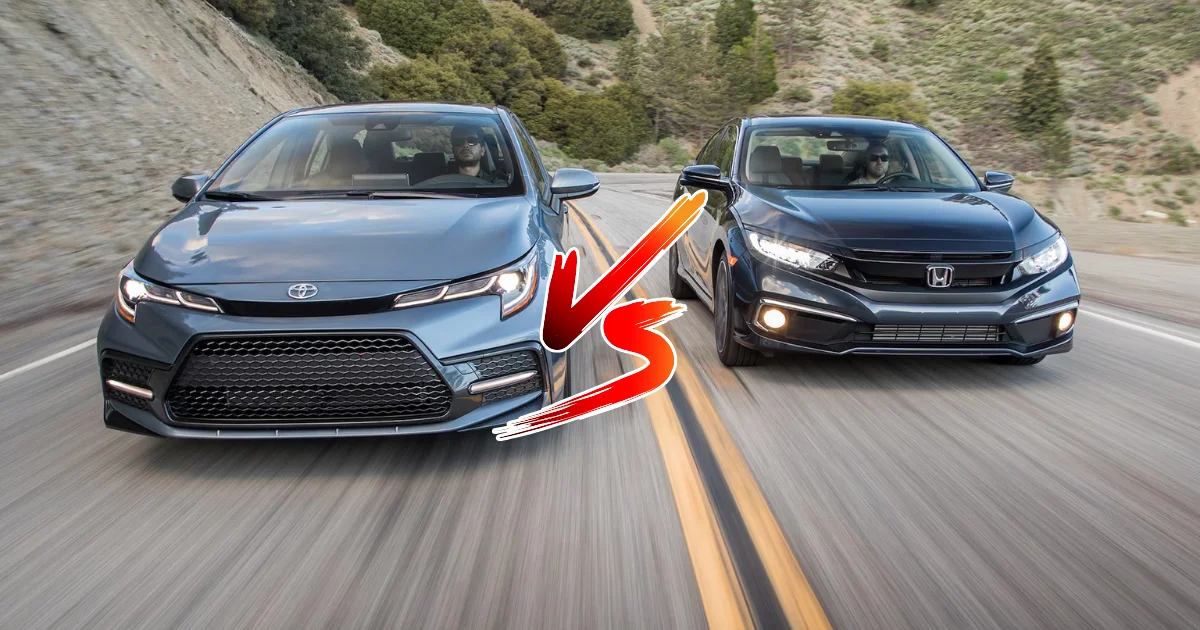Toyota Fielder Review in Bangladesh

The Toyota Fielder is one of the most popular reconditioned wagons in Bangladesh, known for its spacious design, fuel efficiency, and dependable performance. Ideal for families and small businesses, it combines practicality with low running costs. Available in both gasoline and hybrid options, the Fielder delivers smooth driving in busy city traffic and long highway trips. Easy-to-find spare parts and strong resale value make it a smart investment. This review explores its features, fuel economy, ownership costs, and buying tips.
| Item | Details (typical imports) |
|---|---|
| Body Type | 5‑door wagon (Corolla Fielder) |
| Engines | 1.5L gasoline (1NZ-FE/2NR-FKE), 1.8L (2ZR), 1.5L Hybrid (1NZ-FXE) |
| Transmission | CVT (most), some 4AT on older |
| Drive | FWD (most), some 4WD in Japan |
| Fuel Economy | Gasoline: ~11–14 km/L city / 15–18 km/L highway; Hybrid: ~18–22 km/L city / 20–24 km/L highway |
| Safety | ABS, EBD, dual airbags; later years add VSC/traction; select trims: Toyota Safety Sense |
| Cargo | ~407–430 L seats up; flat-fold rear seats |
| Years Commonly Imported | ~2008–2019 (varies by lot) |
Note: Figures are typical user-reported ranges in Bangladesh conditions. Actual results vary by car condition, fuel, load, and driving style.
What Is the Toyota Fielder and Why Do I Recommend It in Bangladesh?
The Toyota Fielder is the wagon version of the Corolla. Think of it as a Corolla with a longer roof and more cargo room. I like it because it mixes small-car running costs with big-boot practicality. In Dhaka traffic, I want easy steering, a tight turning circle, and simple maintenance. The Fielder gives me all three. It feels like a friendly tool: nothing flashy, just reliable. For families, the rear seats fold flat, so I can carry strollers, groceries, or even small furniture without stress.
In Bangladesh, we often buy reconditioned Japanese cars. The Fielder fits that market well. Parts are easy to find, and most mechanics already know Toyota layouts. If I have to replace suspension bushings, CVT fluid, or an oxygen sensor, I can do it without hunting rare parts. Also, the hybrid option helps me save fuel in stop‑go traffic. When the car crawls, the hybrid runs more on battery, and my wallet breathes.
The cabin is simple. I get hard plastics but tidy fit-and-finish. Older units have basic head units; newer ones add better screens and steering controls. Safety is steady: ABS is common; stability control appears on later years. Some imports even bring Toyota Safety Sense (pre‑collision warning and lane features). For a daily, school run, or rideshare, the Fielder is a calm companion. I recommend it when you want space + economy + low stress in Bangladesh.
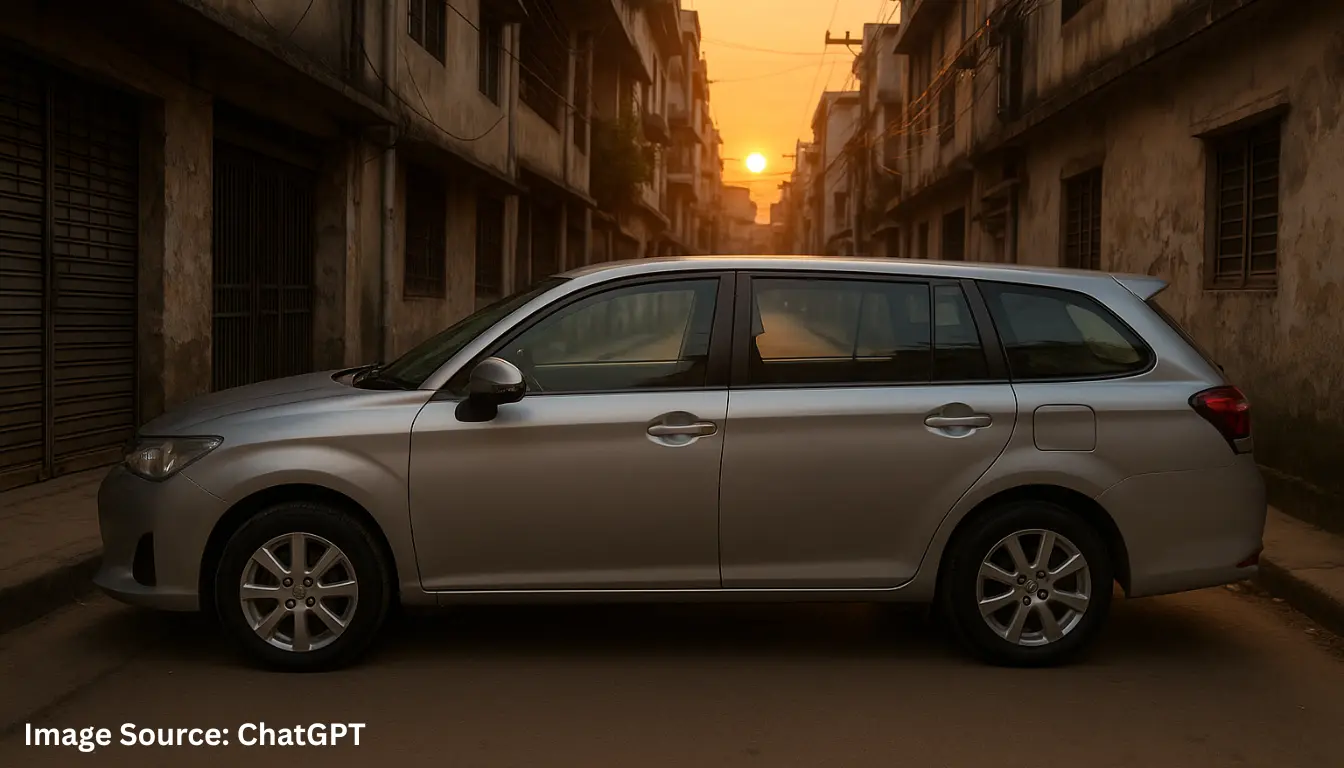
Bangladesh Market Overview: Availability, Sourcing & Paperwork
When I shop the Toyota Fielder in Bangladesh, I usually see two streams: older 2008–2012 gasoline units and newer 2013–2019 gasoline or hybrid units. Most arrive from Japanese auctions as reconditioned cars. I always ask for the auction sheet and a translated copy. Grades like 3.5, 4, or higher are safer bets. If a seller can’t show the sheet, I slow down. I also check import papers, chassis numbers, and mileage records.
Sourcing is simple: trusted reconditioned showrooms, known importers, and sometimes private listings. I prefer yards that allow a long test drive and a third‑party inspection. For paperwork, I verify registration, tax token, fitness, and updated insurance. If the unit is hybrid, I ask for a hybrid battery health report or at least a scan. During negotiation, I confirm spare keys, tool kit, jack, and owners manual. Small things save future headaches.
Pricing moves with exchange rates, auction demand, and condition. A clean grade, low mileage, and newer safety features raise the price. If the car is freshly painted on multiple panels, I ask “why”. Repaint is not always bad, but I note it. For Dhaka use, I like 2015–2017 hybrids for economy and 2014–2016 gasoline for simpler upkeep. Outside Dhaka, gasoline versions with good service history also work well. The market is deep, so I never rush. A steady search brings a good Fielder.
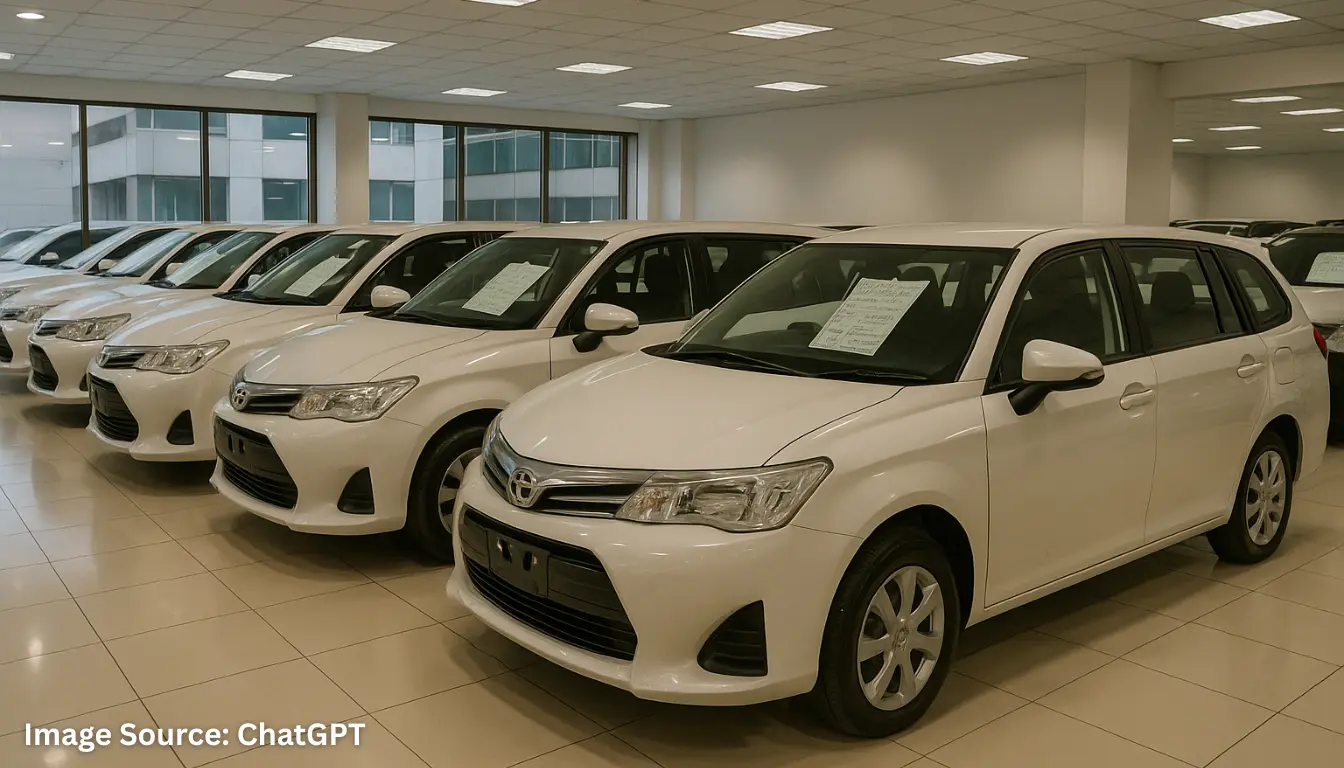
Engine & Fuel Economy: Gasoline vs Hybrid in Real Dhaka Traffic
The toyota fielder comes with small, efficient engines. Gasoline models commonly use 1.5L (older 1NZ‑FE or newer 2NR‑FKE) and sometimes 1.8L (2ZR). The hybrid uses the 1.5L 1NZ‑FXE with an electric motor and battery. In my daily Dhaka runs, the gasoline Fielder gives me about 11–14 km/L if I drive calmly and keep the CVT healthy. On long highway cruises, I see 15–18 km/L at moderate speeds. With the hybrid, I routinely get 18–22 km/L in city traffic and 20–24 km/L on highways.
Fuel choice matters. Our fuel quality varies, so I fill at reliable stations. For older engines, I avoid harsh acceleration when the engine is cold. For CVT, I make smooth throttle moves. With hybrids, I ease off early and let regen braking slow the car. I keep tire pressure correct, because soft tires waste fuel and make steering heavy. I also avoid roof racks unless I need them; extra drag hurts economy.
Maintenance affects economy too. A dirty air filter, old plugs, or overdue CVT fluid will cost me kms per liter. I follow a 5k–7k km oil change interval with the correct grade. For hybrids, I keep the cooling fan clean and the battery air passages unclogged. On bad days, even a hybrid will drink more if I race between traffic lights. The Fielder rewards calm driving. If economy is your top priority in Bangladesh, the hybrid is a sweet match.
Hybrid Battery: What I Check Before Buying
Before I commit to a Toyota Fielder hybrid, I scan the battery using a proper OBD tool. I want even cell voltages, normal temperatures, and no stored error codes. I inspect the battery cooling fan and ducts for dust. If the fan is dirty, I clean it. I also listen for unusual engine cycling; constant on/off at odd times can hint at weak cells. During the test drive, I watch how quickly the battery charges under braking and how long it supports EV creep in traffic. A healthy pack gives smooth, quiet starts and easy crawl in jams. I also ask the seller about previous hybrid services. If they can show receipts for coolant changes and inverter maintenance, I feel better. With the right care, the hybrid stays reliable and saves a lot of fuel in Dhaka.

Driving Experience: Ride, Handling & CVT in Everyday Use
In Dhaka, I want a car that is light to steer and easy to park. The toyota fielder feels nimble. The wheelbase gives decent stability, and the suspension is tuned for comfort. Over speed bumps, the car stays calm if I keep tire pressures right. On the highway, it is quiet enough at 80–100 km/h, but strong crosswinds can move the light body a bit. Brakes are predictable. The rear drum setup on some trims is not a problem for normal use.
The CVT is smooth when it’s healthy. It keeps the engine in the sweet spot, which helps economy. To keep it happy, I avoid hard launches and keep the fluid fresh at sensible intervals (check your manual and mechanic’s advice). If I hear a whine, feel slip, or notice RPM flares, I get it scanned. Early action is cheaper than a full rebuild. The steering feels light in city lanes and U‑turns. Turning radius is friendly for narrow roads and tight parking.
Ground clearance is okay for Dhaka speed breakers when I go slow. I rarely scrape unless the car is heavily loaded. On rough village roads, I slow down and avoid sharp pothole hits. The Fielder is a calm car, not a rally car. For long trips, I bring a basic tool kit, a tire inflator, and a puncture kit. With this simple approach, my Fielder drives like a friendly helper, day after day, without drama.
Interior & Practicality: Seats, Boot Space & Daily Comfort
The toyota fielder cabin is simple and smart. I get good headroom up front and decent knee room in the back. The rear bench fits two adults and a child better than three adults across. Seats fold flat, which is the magic of the wagon. I can load big boxes, a folded cycle, or lots of groceries. With seats up, the boot is already generous; with seats down, it becomes almost van‑like for light cargo. For families, that flat load floor is gold.
Materials are durable. Plastics are hard, but they don’t rattle much if the car is healthy. Air‑conditioner performance is strong in city heat if the system is clean and the cabin filter is fresh. On summer days, a windshield sunshade helps. The dash layout is easy to learn. Older imports may have Japanese head units; I often swap to a local Android unit with Apple CarPlay/Android Auto. That makes maps and music simple.
Storage is decent: door pockets, cup holders, and a glove box that actually holds more than a pen. Noise levels are okay for the class. I hear road textures on rough concrete, but it’s not tiring at normal speeds. For child seats, I check ISOFIX points on newer years. All in, the Fielder feels like a practical tool. It is not luxurious, but it is honest, roomy, and low‑stress, which suits my Bangladesh life.
Family Use Tips: Easy, Clean, and Safe
For school runs, I keep a small organizer in the boot: wipes, umbrella, spare water, and a compact first‑aid kit. I add rubber floor mats to handle mud during monsoon. For safety, I set the child lock and secure the child seat correctly every time. I teach kids to enter from the curb side when possible. I keep a glass breaker/seatbelt cutter in the driver door. For cleanliness, I vacuum once a week and replace the cabin filter on schedule. A tidy Fielder stays fresh and holds resale value.
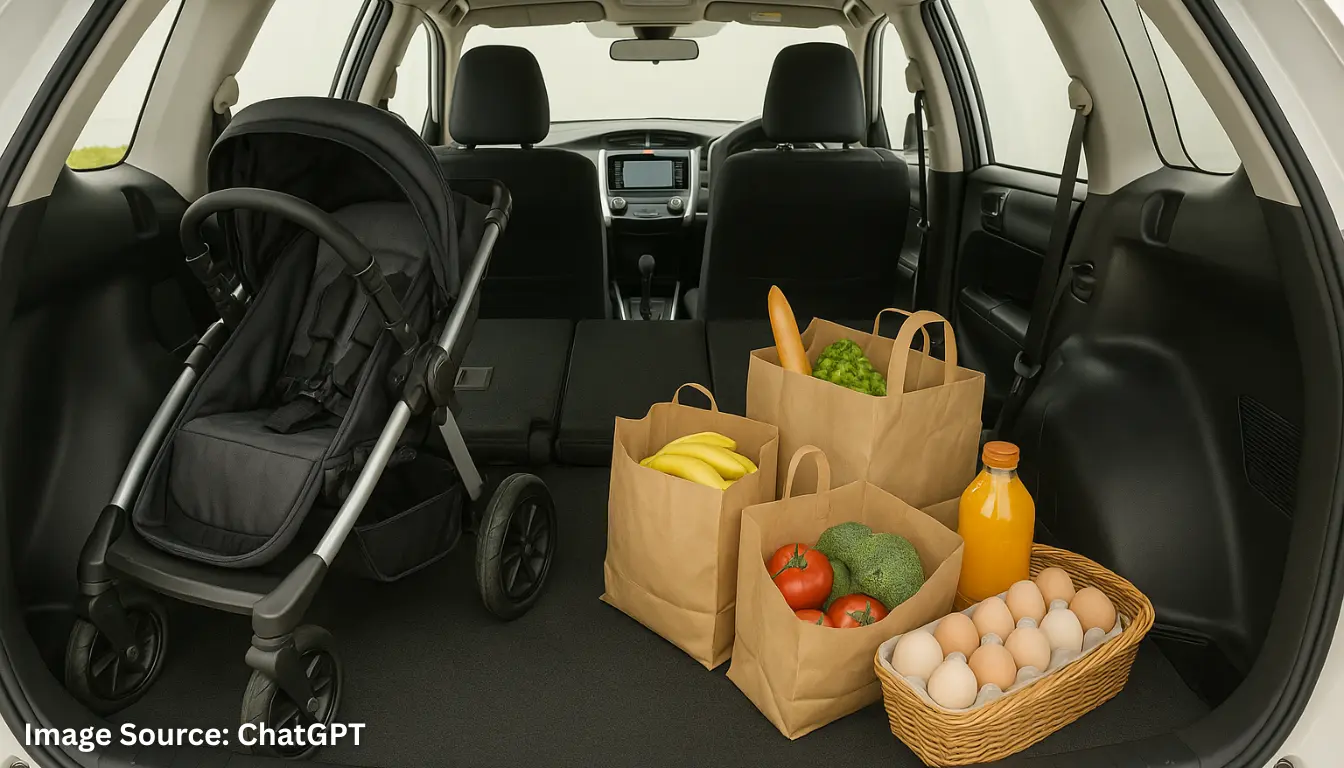
Features & Safety: What I Actually Get on Typical Imports
Feature lists vary by year and trim. On most toyota fielder units I see: power windows, power mirrors, keyless entry, tilt steering, and a basic audio unit. Some trims add smart key with push start, steering audio controls, automatic climate, and better fabric. Newer years may give LED headlamps and nicer wheels. Wagons often include roof rails in certain trims. I never buy a car for just gadgets, but good basics matter: working AC, strong lights, and reliable wipers.
Safety starts with ABS and EBD. Dual airbags are common; some later imports add side/curtain airbags. I look for VSC (stability control) and traction control on mid/late‑2010s units—great in rain. Select higher trims and later years bring Toyota Safety Sense items like pre‑collision warning and lane features. These are helpful, but I still drive defensively. I also check tire age; old, hard tires hurt grip more than any fancy system can help.
Infotainment upgrades are easy. A good Android unit with CarPlay/Android Auto makes maps and calls simple. I make sure the reverse camera works and has clean wiring. For night driving, I align headlights correctly and avoid blinding LEDs. Real safety is a mix: maintained brakes, healthy tires, correct alignment, and a calm driver. The Fielder gives me a solid base; I complete the picture with smart upkeep.
Ownership Costs in Bangladesh: Fuel, Parts & Routine Bills
Owning a toyota fielder is friendly to my budget if I plan. Fuel is the main cost. Hybrids save more in Dhaka jams; gasoline versions are simpler outside the city. I keep my driving smooth, avoid idling with AC for long periods, and check tire pressure monthly. Maintenance is next. Oil, filters, and basic items are affordable. I budget for brake pads, a CVT service at sensible intervals, suspension bushings, and occasional sensors.
Parts are widely available. Good aftermarket and used OEM parts live in local markets. For big items, I compare multiple shops. For hybrids, I set aside a buffer for potential battery servicing in the future, even though many packs run long when kept cool and clean. Paperwork includes tax token, fitness (when required), and insurance. I keep copies of everything in a folder. Clean paperwork helps resale—buyers trust a tidy file.
For services, I prefer workshops that use torque wrenches, scan tools, and proper fluids. Cheap shortcuts get expensive later. If I drive rideshare or long highway routes, I inspect brakes more often. Wheel alignment every few months keeps tires happy. With this steady rhythm, the Fielder stays cheap to run and easy to live with. It’s not just about buying the car; it’s about caring for it, calmly and regularly.
Simple Service Schedule I Follow
- Every 5k–7k km: Engine oil + filter; quick inspection of belts, hoses, and leaks.
- Every 10k–15k km: Air filter, cabin filter; rotate tires; brake cleaning and check.
- Every 30k–40k km: CVT fluid (use correct spec), spark plugs (as per engine type), throttle body clean if needed.
- Annually: Coolant, brake fluid check, AC service (if cooling drops), wheel alignment/balance.
- Hybrid care: Clean battery cooling fan/duct; scan health; keep vents dust‑free.
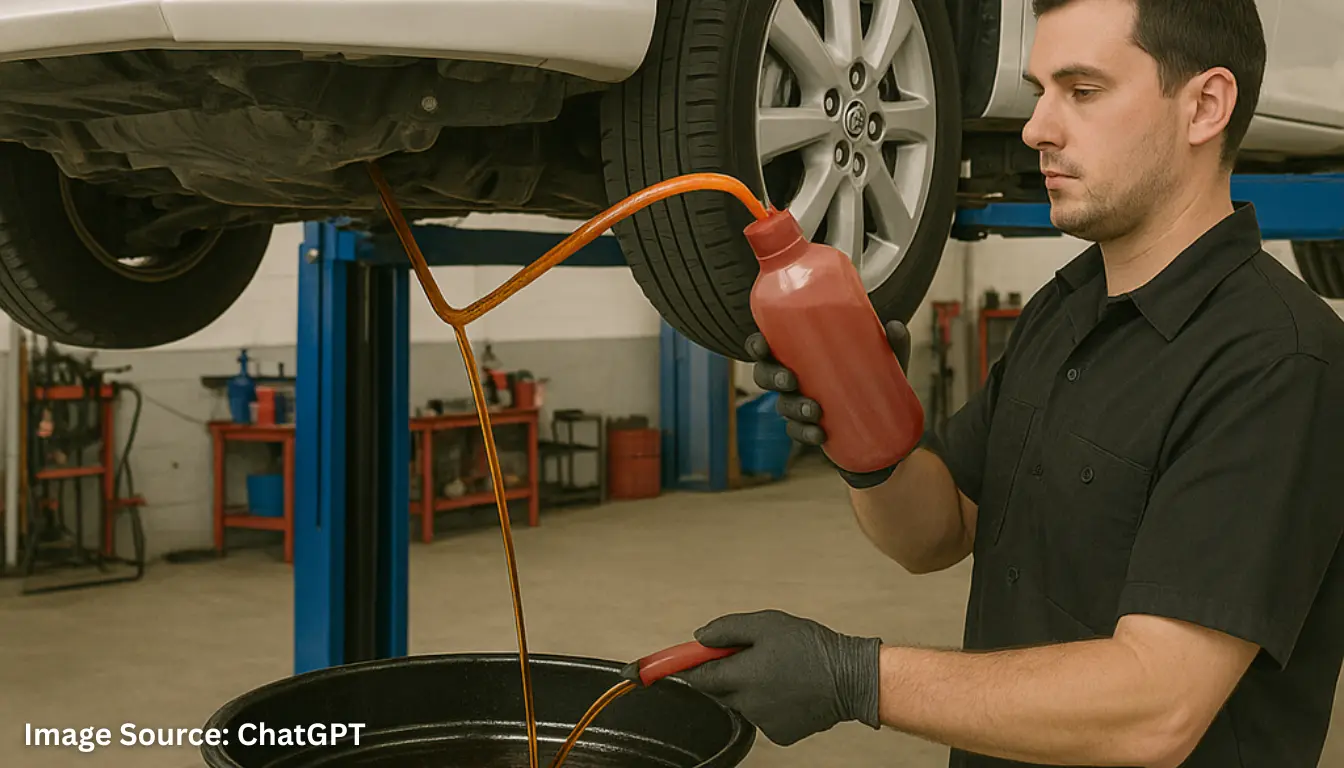
Common Issues & What I Check Before I Pay
No car is perfect. On the toyota fielder, I watch a few areas. CVT: If neglected, it can feel weak, flare RPM, or whine. A scan and test drive reveal much. Suspension: Bushings and links wear on rough roads; clunks over bumps mean it’s time for parts. Steering: Any odd vibration under braking hints at warped rotors or uneven pads. Electricals: Check all windows, mirrors, AC modes, and cameras. A lazy blower motor or dirty evaporator hurts cooling.
For hybrids, I scan the traction battery, check the cooling fan, and confirm no inverter faults. I also look under the car for rust, especially on older imports from snowy regions in Japan. Inside, I inspect seat rails and spare wheel well for signs of flood damage. I read the auction sheet carefully: “R” for repair history is not a deal‑breaker if repairs were done well, but I want full honesty on panels.
I always take a long test drive: cold start, warm idle, low‑speed crawl, highway sprint, and repeated stops. I listen for CVT behavior in slow turns. I test the handbrake on an incline. If anything feels off, I either budget for the fix or I walk away. There are many Fielders. The right one will feel calm, track straight, brake straight, and cool the cabin fast.
Trims & Model-Year Guide: Picking the Right Fielder
Trims vary, but I often see X, G, WxB, and Hybrid G in our market. The X is basic and honest—great for budget buyers. The G adds nicer touches: better seat fabric, steering controls, smart key (varies by year). The WxB looks sporty with dark interior themes and extra kit. Hybrid trims mirror gasoline ones but add EV creep and better city economy. If you want comfort with savings, a mid‑trim Hybrid G from mid‑2010s is a sweet spot.
Model years matter for features. Later years bring VSC, improved crash structures, and sometimes Toyota Safety Sense. Headlamps and infotainment also improve. If you prefer simpler ownership outside Dhaka, a 2014–2016 gasoline unit with low mileage and service records can be a happy pick. If you live in city jams, the 2015–2017 hybrid feels best for fuel and smoothness. I always match the car to my use: more highway = gasoline okay; heavy city = hybrid wins.
I don’t chase the absolute lowest mileage number. A 60–80k km car with clear records can be better than a “30k” story with no proof. I choose condition + transparency over claim. The right trim, clean history, and honest seller together make a Fielder that stays with me for years.
Comparison: Fielder vs Axio vs Fit Shuttle vs Wingroad
Here’s how the toyota fielder stacks up against common Bangladesh choices.
| Model | Strengths | Weaknesses | Best For |
|---|---|---|---|
| Toyota Fielder | Big boot, flat-fold seats, easy parts, hybrid option | Not sporty; hard plastics | Families, small business, rideshare |
| Toyota Axio (Sedan) | Smooth ride, familiar service | Smaller trunk opening | City drivers who prefer sedan |
| Honda Fit Shuttle | Clever space, strong hybrid economy | Parts sometimes pricier; DCT cautions on some | Economy lovers, light cargo |
| Nissan Wingroad | Value pricing, roomy | Resale & parts network weaker | Budget buyers who maintain well |
In daily Bangladesh life, the Fielder is my balanced pick when I need wagon space without big running costs. The Axio is neat for those who like sedans. The Fit Shuttle is clever and frugal but needs careful gearbox checks. The Wingroad can be a bargain if you have a trusted Nissan mechanic. For me, when I carry family, luggage, or supplies, the Fielder’s long roof makes small problems feel small.
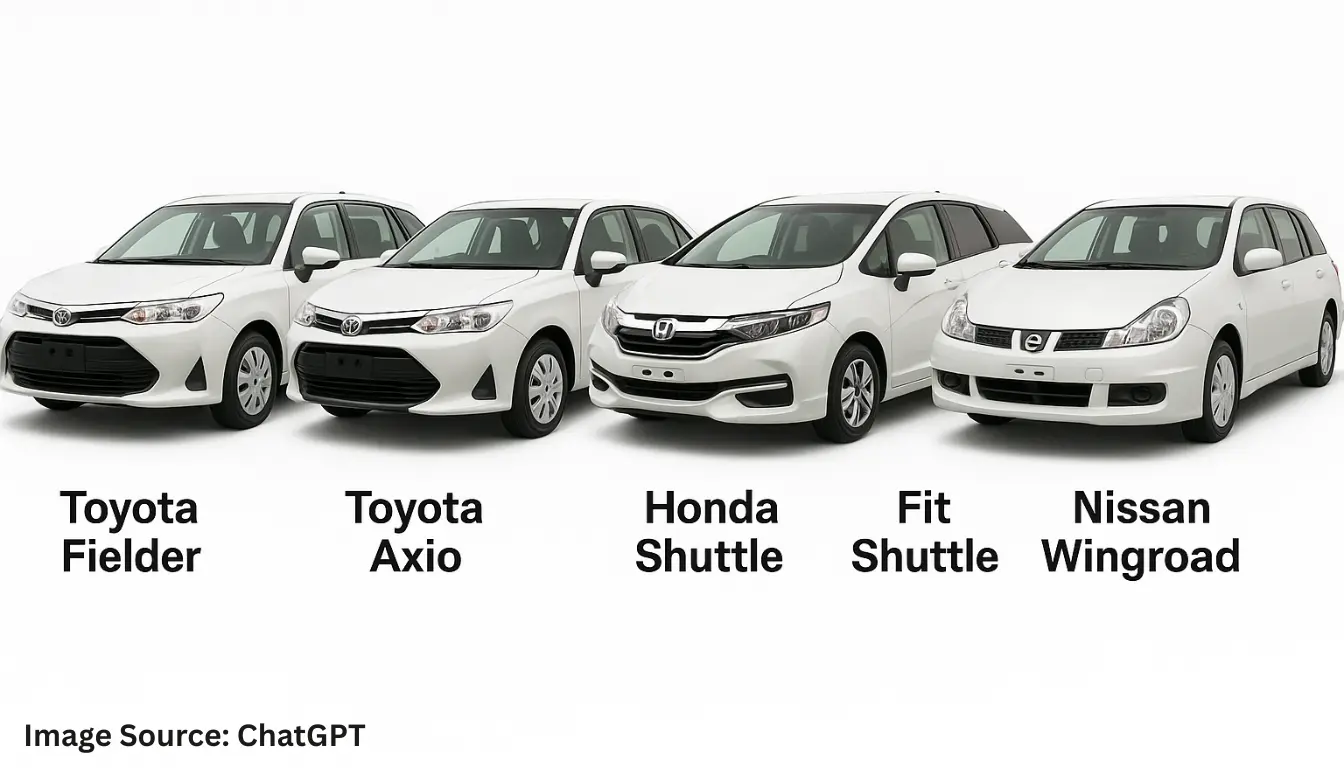
How to Buy a Good Fielder in Bangladesh (Step‑by‑Step)
- Define your use. City jams? Consider hybrid. Highway and simple upkeep? Gasoline is fine.
- Set a budget with buffer. Keep funds for tires, fluids, and small fixes after purchase.
- Shortlist sellers. Prefer sellers who share auction sheets and allow third‑party inspections.
- Check papers. Chassis number, import docs, registration, tax token, fitness, insurance.
- Inspect body. Look for panel gaps, overspray, fresh underbody coating (ask why).
- Scan the car. Read fault codes; check ABS, airbag, hybrid, CVT data if possible.
- Test drive long. Cold start to highway; listen for CVT whine and suspension knocks.
- Negotiate with facts. Use inspection findings, tire age, brake wear, and service gaps.
- Service after buying. Oil, filters, CVT fluid (if due), brakes, alignment.
- Keep records. File receipts; clean history raises resale value.
A calm, methodical process beats “love at first sight.” Bangladesh has many Fielders. The right one is the one that gives you clarity at every step.
Accessories & Upgrades I Actually Find Useful
I keep upgrades simple and practical. A good Android head unit with CarPlay/Android Auto makes maps and calls easy. Reverse camera with dynamic guidelines helps in tight lanes. I add rubber mats for monsoon mud and a trunk liner to protect the flat cargo floor. For long drives, I carry a tire inflator, a puncture kit, and a jump starter. LED interior bulbs brighten nights, but for exterior, I keep proper alignment to avoid glare.
Roof racks are helpful only when I really need them; they add wind noise and lower economy. I skip heavy wheels; they hurt ride and fuel use. For safety, I choose fresh branded tires with proper load and speed ratings. A small dashcam is great for incident records on busy roads. I also install seat‑back organizers for kids’ items. These simple upgrades keep the Fielder clean, safe, and family‑ready.
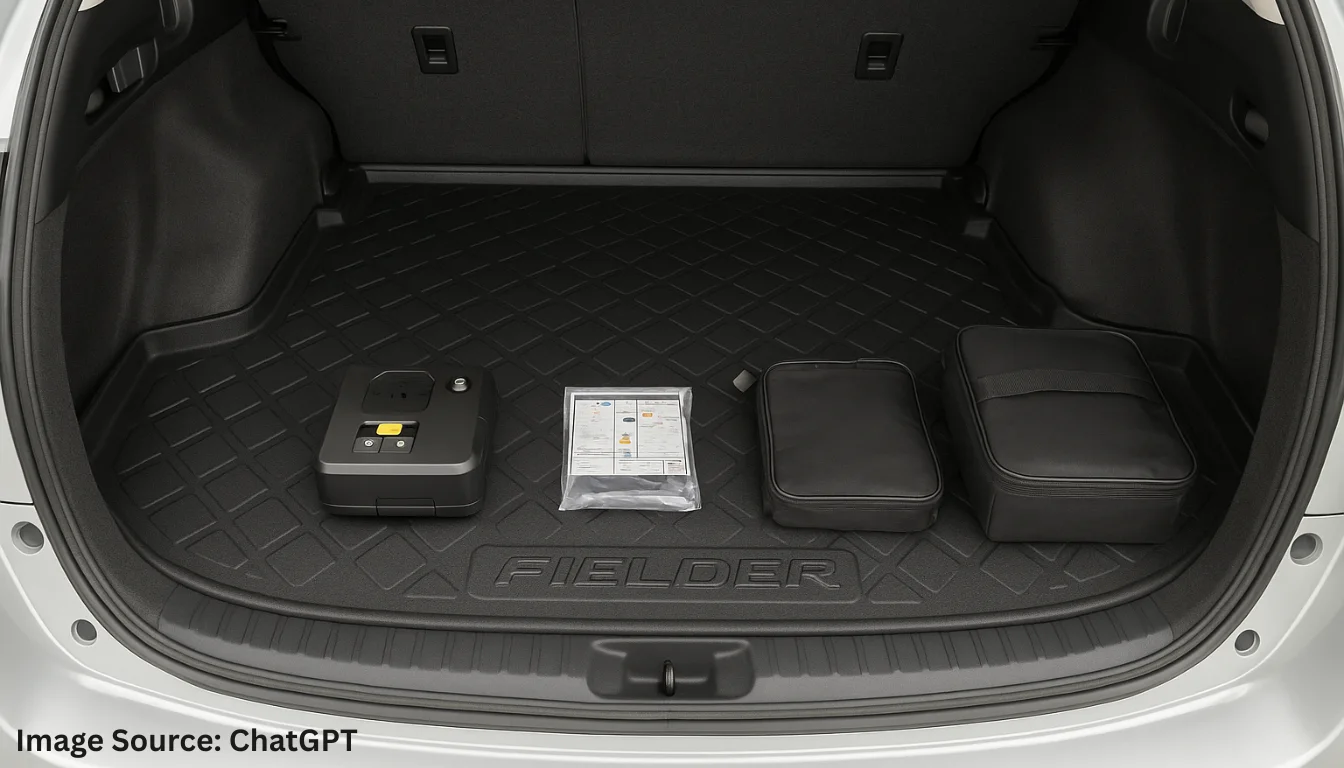
Verdict: Should You Buy the Toyota Fielder in Bangladesh?
If you need a trusty, roomy, and efficient daily, the toyota fielder is easy to say “yes” to. It’s not fancy, but it is smart. For Dhaka traffic, the hybrid saves fuel and feels smooth. For simple highway life, the gasoline unit is calm and cheap to maintain. Parts are available, and most mechanics know Toyota layouts. The wagon body makes family and small business tasks simple. With a clean auction grade, steady service, and sane driving, the Fielder becomes a stress‑free tool.
I like the Fielder for buyers who value space + economy + peace of mind. It won’t win drag races, but it will carry your life with less fuel and fewer headaches. If you follow the steps above—paper checks, scans, and a long test drive—you’ll likely end up with a car that just works. In Bangladesh, that’s a big win.
Key Takeaways
- Balanced best‑buy: Big space, small running costs, easy parts.
- Hybrid for city, gasoline for highway: Match engine to your daily route.
- CVT care: Smooth driving + timely fluid changes keep it happy.
- Paper & scan: Auction sheet + OBD scan = smart purchase.
- Simple upgrades: CarPlay unit, fresh tires, dashcam, trunk liner.
“Buy slowly, maintain calmly, and the Fielder will pay you back every day.”
FAQs
1) Is the Toyota Fielder good for Dhaka traffic?
Yes. The Fielder is compact enough to slip through lanes but roomy inside. The steering is light, and visibility is good. In jams, the hybrid version shines because it uses the battery at low speeds. Even the gasoline model feels smooth if you drive gently. With regular maintenance, it stays cool, quiet, and easy to park, which makes daily Dhaka trips much less tiring for me.
2) Gasoline vs Hybrid: which one should I buy?
If most of your trips are short and slow, I suggest the hybrid. It saves more fuel and feels very smooth when crawling. If you do long highway runs or live outside major cities, a gasoline Fielder is simpler and still efficient. Both can be reliable. I match the choice to my route, my budget, and whether I’m comfortable with hybrid checks and occasional battery care.
3) How do I check a reconditioned Fielder before payment?
I always ask for the auction sheet, import papers, and a chassis number check. I scan for fault codes and test the car from cold start to highway speed. I listen for CVT whine, check suspension knocks, inspect tires, and confirm AC performance. For hybrids, I scan battery health and clean the cooling fan. If anything is unclear, I negotiate or walk away. There are many cars; I don’t rush.
4) What are common repairs and costs I should expect?
Over time, I plan for brake pads, suspension bushings, and routine fluids. For CVT health, I change fluid at sensible intervals. For hybrids, I keep the battery cool and clean, and I scan it yearly. Parts are widely available, with options from OEM to good aftermarket. A well‑maintained Fielder seldom needs surprise repairs if I service it on time and fix small issues early.
5) Will the Fielder hold resale value in Bangladesh?
Yes, usually. Toyota wagons are popular here. A clean auction grade, full paperwork, and a tidy service file help a lot. The hybrid version attracts city buyers who want economy; the gasoline version appeals to those who prefer simpler upkeep. If I keep my car clean, avoid rough mods, and maintain it on schedule, resale stays strong and the car sells faster when I upgrade.
